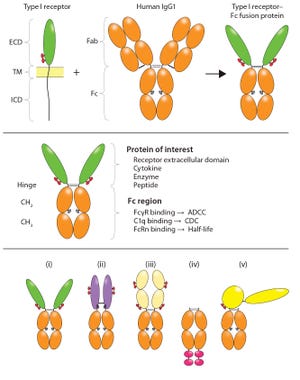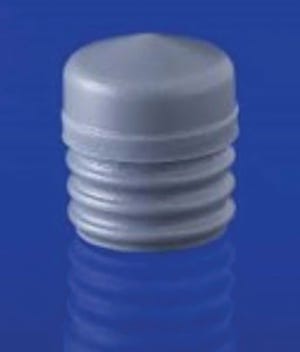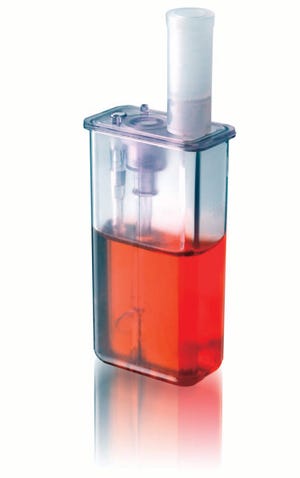with Dr. Laura Juckem
High-efficiency transient transfections of suspension- adapted Chinese hamster ovary (CHO) cells enable researchers to bridge upstream and downstream processes. This helps to provide confidence that a recombinant protein will have the same properties throughout its development as a biologic. As drug targets become increasingly complex, proper protein folding and posttranslational modifications become more relevant. Early upstream work with the same cell type — e.g., CHO instead of HEK 293 cells — ensures similar product quality from beginning to end.
Preclinical drug discovery benefits from rapid screening of many different protein constructs with transient transfection. Usable protein can be obtained through transient transfection in under a week while stable cell lines are in development, which can take over three months. These methods are enabled by major advances in recombinant protein production over the past decade: cell-line engineering, optimization of expression vectors and ...
Ebola: Biotech Goes on Counterattack
by Cheryl Scott
It seems that every year brings a new virus or bacterium to the forefront of the public’s limited attention for infectious disease research. Sometimes it’s a newly identified pathogen such as the severe acute respiratory syndrome (SARS) virus. Often, however, it’s a new strain of influenza or other species — as is the case with this year’s growing focus on the Ebola virus. As recently as March 2014, Reuters was reporting on “scant funds and rare outbreaks” that led to a “slim” drug pipeline. One of the most deadly viruses known to humans, Ebola was the subject of some government research due to fears of its potential use as a bioweapon. But few companies were involved because the disease’s rarity offered little potential return on investment.
A new strain was identified in April as being responsible for dozens of deaths in Guinea, and then it began to spread — most likely due to the less than stellar capabilities of west African rural healthcare. The vi...
www.photos.com
Biopharmaceutical medicinal products (biologics) had an estimated global commercial market size of US$100 billion in 2013. Because they are more complex than small molecules — and defined by the uniqueness of their manufacturing processes — the generics approval process is not applicable for biologics. Article 10(4) of European Medicines Agency (EMA) directive 2001/83/EC was amended in 2004 in response to the industry’s desire for market access by launching a “similar” biologic abbreviated approval pathway.
Leading the subsequent process, the EMA issued a dedicated guidance for industry on the topic of biosimilars (
1
). The guidance can be described as a response or accompaniment to a biosimilar development program, which prompted guidance to be issued case by case. Three hierarchical layers of documentation were created. The first layer contains general guidance on the principle of the biosimilar approach. The middle layer contains general guidance on clinical topics such as safety and ef...
WWW.GRAPHICSTOCK.COM
Complex drug development and biomanufacturing processes involve back-and-forth shuttling of activities among multiple functions. Close communication, collaboration, and coordination among stakeholder departments and functions are needed to successfully execute these processes. Whereas collaboration between multiple functions leverages each function’s expertise, the resultant structure also poses several challenges, as listed in Table 1 (
1
). These challenges are further exacerbated as an organization grows in size and geography (
2
,
3
).
Table 1: Challenges associated with processes involving multiple functions
In the absence of clarity and appropriate assignment of roles and responsibilities, organizations may end up wasting time and resources. To address potential challenges of cross-functional processes, the following must be taken into account from an operational perspective (
4
):
Process effectiveness analysis can address those challenges by breaking down the processes into i...
Although vaccines and immunotherapies are designed to engage the human immune system in fighting disease, unwanted immunogenicity can be a major problem for protein-based therapeutics. Some patients produce antidrug antibodies (ADAs), which might lead to drug inactivation or adverse effects. Even human and humanized proteins have proven to be surprisingly immunogenic in some cases, suggesting that immune tolerance requires careful consideration in biologic product design. In rushing to deliver new drugs to market, some biotherapeutics developers have overlooked factors that contribute to protein immunogenicity. Fortunately, the parameters influencing vaccine efficacy have been thoroughly studied for years, which allows biopharmaceutical companies to draw parallels when addressing immunogenicity of their protein therapeutics. Individual variations in patient tendencies to develop ADAs are probably genetic, so this is another area where personalized medicine and pharmacogenomics may help the industry progre...
Figure 4: Structural variety of FDA-approved Fc-fusion proteins is illustrated. Typical receptor ECD- containing Fc fusions exhibit single-ligand specificity in bivalent fusion constructs such as (i) alefacept, and (ii) abatacept and belatacept (black dots in denote Cys–Ser mutations in the hinge); “cytokine traps” (iii) such as rilonacept, aflibercept, and ziv-aflibercept; and “peptibodies” (iv) such as the aglycosylated romiplostim with single-ligand specificity in multivalent fusion constructs (in which peptide mimetics represented by large red ovals are attached in tandem and separated by flexible spacers at the C-terminal end of IgG Fc); etanercept (i) and clotting factor Fc (v) FIX Fc and FVIII Fc, with single-ligand specificity in a monovalent fusion construct. Shown in yellow are domains of truncated FIX. Horizontal lines indicate interchain disulfide bonds. Glycosylation sites are indicated in the ligand-binding domains (small red ovals) and Fc domain (small gray ovals). This figure is reproduced...
Photo 1: Fluoropolymer laminated prefillable syringe piston
To drive efficiencies in producing parenteral drug products, manufacturers are using containers and closure components that are received sterile and ready to be introduced into filling lines. The effects of sterilization on the properties of ready-to-use (RU) components must be assessed to ensure proper processing techniques and suitability over the components’ intended shelf lives. Sterile-drug manufacturers must determine the best sterilization method for components based on their respective drug products and processes. Critical areas of risk include potential changes related to material chemical profiles, delivery system functional performance, and drug product compatibility.
We exposed elastomeric materials and molded syringe pistons to either gamma irradiation emitted by cobalt 60 or steam autoclave before evaluation (
1
). We conducted tests before and after sterilization of two halobutyl formulations that are used widely to package parente...
Photo 1: Single-use microscale bioreactor with impeller used on the ambr workstation
The market for biopharmaceutical products remains highly attractive to small biotechnology companies and big pharmaceutical corporations alike (
1
). Most leading market products are made using recombinant technology (
2
). Pressures are continually increasing on process development groups to reduce development costs and timelines for taking new clinical products forward from product research bench scale into initial clinical evaluation studies.
For many years a recognized critical bottleneck in development of products from mammalian cell lines was selection and isolation of stable, high-producing clonal cell lines. In recent years, however, clone-selection criteria have been expanded to include product quality and functionality. That is driven both by regulatory demands and an explosion of interest in production of biosimilars and biobetters.
To meet those requirements, companies apply high-throughput experimental approa...
During my MBA course, Professor Pierre Casse — then at the International Institute for Management Development (IMD) in Lausanne, Switzerland — regularly reminded us that one key to success was constantly finding new ways to “delight and inspire your clients” by creating value. SAFC achieved that objective in its “Overcoming Supply Chain Vulnerability and Lowering Risk in Biopharmaceutical Manufacturing” symposium 17–18th June 2014 in Turnberry, Scotland. Along with a day of industry insight, the event included a visit and tour of SAFC’s new dry-powder media manufacturing facility in Irvine, Scotland. With executive teams from several leading biomanufacturers in attendance, the event was blessed with surprisingly fine weather. We gathered and networked while admiring panoramic views across the Scottish Hebrides.
The symposium focused on supply chain concerns such as how to prevent drug shortages and capacity challenges; quality and variability in raw material supply; risk mitigation strategies; integrating...













